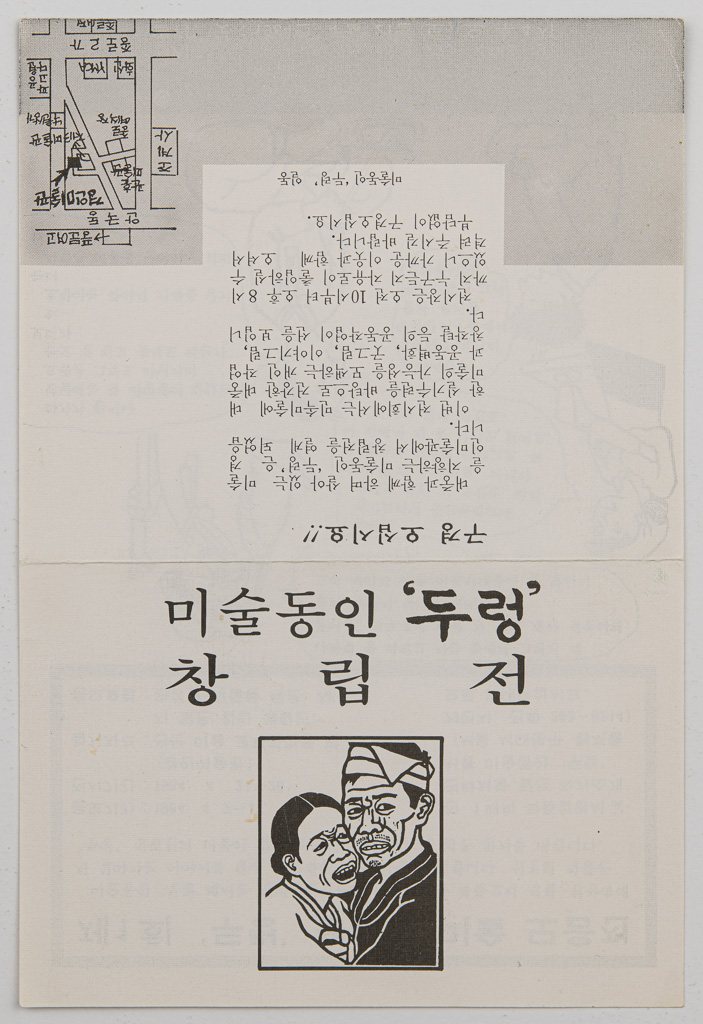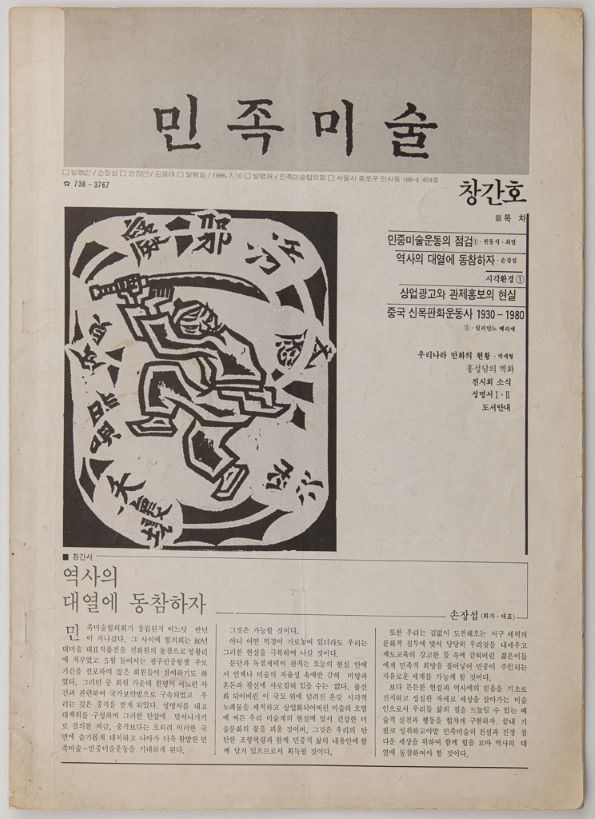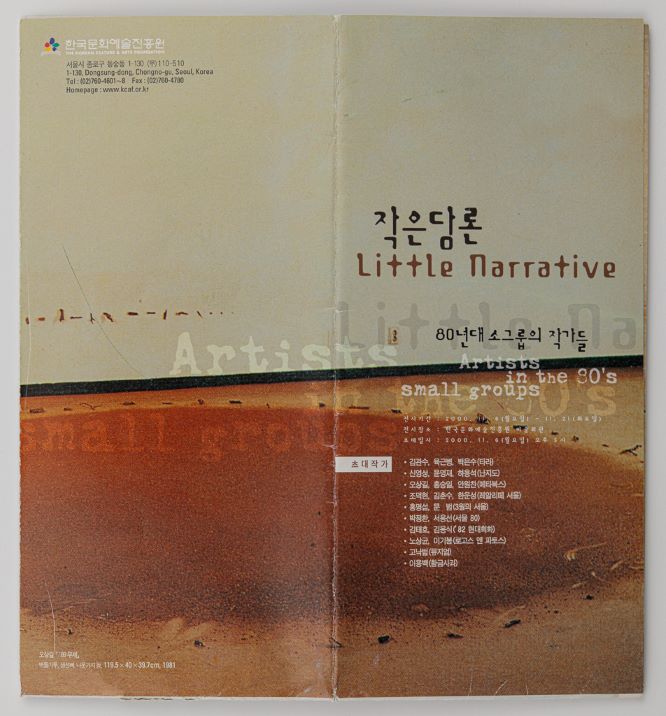
Founding Exhibit for Misul dongin Dureong, Leaflet, 1984, MMCA Art Research Center Collection, Gift of Choi Youl
Dureong
* Source: Multilingual Glossary of Korean Art. Korea Arts Management Service
Related
-

Department of Art at Hongik University
Established in 1949, the Department of Art at Hongik University consists of one art theory department and eleven practice-based departments, including painting, Oriental painting, printmaking, sculpture, woodworking and furniture design, metal art and design, ceramics and glass, textile art and fashion design, visual communication design, and industrial design. In 1955, it moved from Jongro-gu, Seoul to the current location in Sangsu-dong, Mapo-gu, Seoul. The history of the College of Fine Arts can be largely divided into the period of the Department of Fine Arts from 1949 through 1953, the period of the School of Fine Arts from 1954 through 1971, and the period of the College of Fine Arts from 1972 until now. In March 1953, the Department of Fine Arts produced the first six graduates, and in the following year the School of Fine Arts with three departments was established. In December 1971, it was upgraded to a college, which exists up to the present. Several exhibitions organized by its graduates are notable, including the Four Artists Exhibition held in 1956 as the first anti-National Art Exhibition (Daehanminguk misul jeollamhoe or Gukjeon) by the third and fourth classes of graduates and the Union Exhibition of Korean Young Artists held in 1967 by graduates from the 1960s as an effort to realize experimental art.
-

Minjung Art
An artistic movement that came to prominence alongside Korea’s democratization movement in the 1980s. Minjung artists often sought to critically portray the violent repression and corruption of the military dictatorship, to represent the experiences of laborers and farmers, and to achieve social change through art. In contrast to abstraction, which constituted the mainstream of 1970s art in Korea, Minjung Art is notable for the use of representational and figurative forms. One possible point of origin for Minjung Art is Oh Yoon’s work in the Reality Group (Hyeonsil dongin). The group was formed in 1969 by Kim Ji-ha, Oh Yoon, and Lim Se-taek. A variety of Minjung art groups were established, including the Reality and Utterance (Hyunsilgwa bareon) in 1979 by Kim Jungheun, Oh Yoon, Joo Jae-hwan, art critic Sung Wan-kyung, and Choi Min, the Gwangju Freedom Artist Association (Gwangju jayu misulin hyeopuihoe) in 1979 by Hong Sungdam and Choi Youl, the Imsulnyeon (The Year Imsul) in 1982, and the Dureong in 1983. These groups all commonly critiqued Western capitalism. In terms of form, Minjung artists adopted traditional and ethnic folk modes of expression using diverse media such as collage, printmaking, oil painting, and photography. Following the 15 Years of Korean Minjoong Arts: 1980-1994 Exhibition at the National Museum of Modern and Contemporary Art, Minjung Art became an accepted part of Korean art history. Overseas, Minjung Art has also become a recognized term that describes this genre and its unique focus on the political and social history of Korea.
Find More
-

National Art Association
An art association established in November 1985 by a collective of grassroots artists, and often also referred to as Minmihyeop. The association sought to organize artists and groups who represented the different movements within Minjung Art and to represent their varied ideas and interests. In 1995, the original association was reformed into the National Korean People’s Artists Association [Jeonguk minjok misurin yeonhap]. In turn, this was the predecessor of the Korean People’s Artists Association [Minjok misurin hyeophoe], a corporation founded in 2000.
-

Small group movement
A term describing the tendency of many artists in the 1980s to work in small groups, in which the application of many diverse methods, attitudes and values in mediums such as painting, sculpture and installation was common. These groups associated with neither the established modernist abstract art community or the Minjung Art community, which formed the primary two ideologically and formally opposed movements of the 1980s. Instead, artists within these small groups focused on individual approaches to production based on situational contingency, and deliberately declined to develop into larger organizations, unlike the artists of previous generations. The formalization, commercialization, and globalization of the art community ultimately resulted in the disbanding of most of the small groups during the 1990s. However, the works produced within these groups were indicative of the Korean post-modernist movement that was to come.






